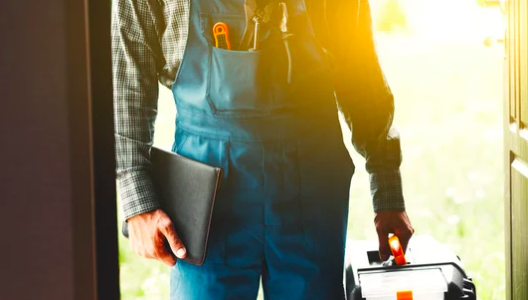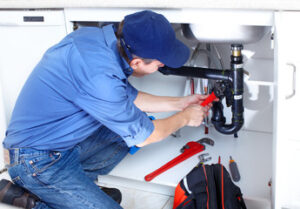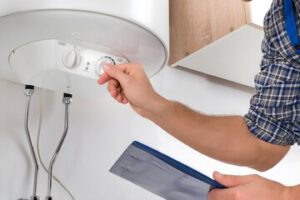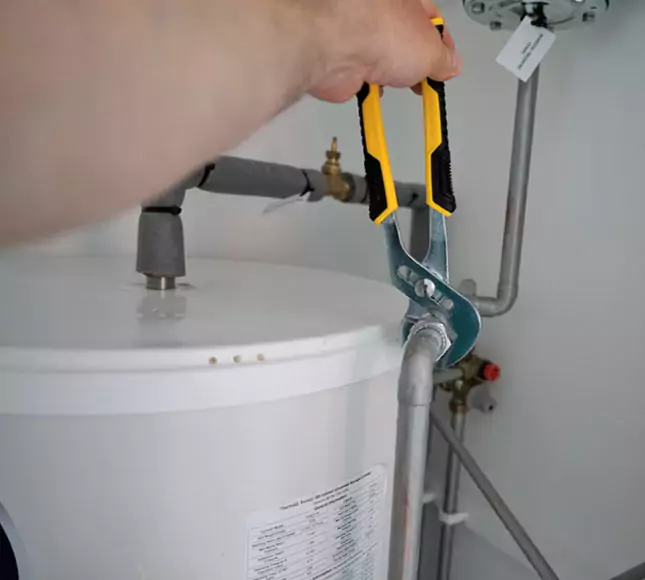Topeka Plumber works on plumbing systems in homes and apartments. These systems include water supply lines, sewage lines, and appliances like sinks, toilets, and showers. To become a residential plumber, you must complete a formal apprenticeship or trade school program. Additionally, you will need to get licensed by the jurisdiction where you want to work.

Plumbing systems take away waste water, supply hot and cold water, and regulate indoor climate through pipes, valves, fixtures and appliances. They are a vital part of any house and need regular maintenance to ensure proper functionality and safety for household occupants. A plumber can install new fixtures, repair existing ones and replace parts like taps, showers and toilets. They also install and repair gas lines and backflow preventer valves.
Plumbers need to have good customer service skills to communicate with clients and offer advice on plumbing solutions. They also need to be able to interpret blueprints and plans for plumbing installations, and ensure compliance with local, state and federal codes and regulations. Plumbers may collaborate with other professionals, including architects and construction teams, to ensure that plumbing systems are seamlessly integrated into building projects.
Residential plumbers are often on-call for emergency repairs. This requires them to have strong problem-solving abilities to diagnose and repair complex issues in pipes, fixtures and appliances. They can also advise their clients on best practices for maintaining their plumbing system to avoid future problems.
A skilled plumber can also perform plumbing inspections for a home’s water, drain and sewer systems. They can detect leaks, clogs and other problems that could affect a home’s value or health and safety. They can also advise homeowners on how to protect their home’s plumbing system from damage caused by tree roots, storms or wildlife.
Some plumbers specialize in certain types of plumbing work, such as septic tank and water heater installation and repair. Others focus on specific plumbing fixtures, like sinks and tubs. Still, others work on commercial or industrial plumbing systems.
In addition to installing and repairing plumbing systems, plumbers can also install and maintain water treatment and fire suppression systems. They can even handle hazardous materials like asbestos. If you’re interested in a career as a plumber, consider attending a trade school or apprenticeship program to learn the necessary skills.
Brooklyn-based Parkset Plumbing has been serving New York City since 1968. Its services include repairing leaky faucets, replacing clogged drains and sewer lines, and installing backflow preventer valves in homes and commercial buildings. The company can also remodel bathrooms and install new water heaters. Its team of licensed technicians uses PEX, PVC, and ABS pipes for all plumbing needs. They also use copper and galvanized pipe for drain, water supply, and vent lines.
Maintenance
A residential plumber can provide maintenance services for a home’s plumbing systems. These services include inspecting and testing drain lines, toilets, showers, water heaters and other plumbing appliances to ensure they are functioning correctly and efficiently. These professionals can also advise clients on water efficiency and conservation efforts and recommend upgrades to improve the overall performance of a plumbing system.
Most licensed plumbers recommend homeowners schedule regular maintenance visits once or twice a year. This allows for the identification and correction of minor issues before they become bigger problems, saving homeowners money in the long run. However, the frequency of plumbing maintenance can vary depending on a number of factors. For example, homeowners with older homes should probably schedule more frequent maintenance appointments to address underlying problems that could lead to serious damage and costly repairs. In addition, homeowners with lots of trees surrounding their home may need to have their plumbing serviced more often to address issues caused by tree roots.
A professional plumber can also be helpful for those experiencing a sudden plumbing issue such as a clogged toilet or leaky water faucet. These plumbers can quickly diagnose the problem and repair or replace parts as needed. This is why it is important to choose a plumbing company with a good reputation for customer service and quality work.
Those interested in becoming a plumber can typically find training through a vocational school program or a formal union or trade organization apprenticeship. In addition, many states require plumbers to pass licensing exams and meet certain education and experience requirements. Once licensed, plumbers can expect to earn a decent salary. In some cases, plumbers can opt to work independently or as part of a larger plumbing contractor company. In these situations, plumbers can enjoy more freedom over their work schedule and the types of projects they take on.
Clogging
Whether the plumbing system in a house is old or new, it can become clogged with hair, soap scum and food scraps. While drain cleaners may be able to break up some clogs, serious issues require the attention of a residential plumber.
A licensed plumber can use specialized tools to clear out clogged pipes without destroying them. They might also install or repair water heaters, inspect sewer lines and handle other tasks related to home plumbing. These professionals are required to know how to read and interpret blueprints, operate equipment like cutting torches and threading machines and understand the construction of home plumbing systems.
It’s not uncommon for homeowners to experience a clogged sink, toilet or bathtub at some point. When this happens, it’s important to hire a plumber quickly to avoid further damage and expensive repairs. A residential plumber can diagnose the problem and recommend a quick, affordable solution.
Homeowners depend on their plumbing to flush toilets, drain sinks and bathtubs and supply freshwater for cooking and drinking. However, these systems are prone to wear and tear, so they must be regularly inspected and maintained to prevent clogs and other problems. A skilled residential plumber can help keep a homeowner’s plumbing working efficiently for years to come.
Clogged toilets and sinks are common, but it’s just as important to maintain the integrity of a home’s main plumbing line. This huge pipe sends wastewater away from sinks, toilets and tubs, but if it becomes clogged, the entire home could be affected. A residential plumber can use a motorized auger to clear out even the most stubborn clogs in the main sewer line.
While many people assume that a residential plumber is only responsible for installing and maintaining plumbing systems in private homes, they also offer services to commercial clients. In fact, a plumber who works on commercial properties may spend more time on clogged toilets and drains because these systems tend to be busier and are subject to more wear and tear. This type of plumber must be familiar with a variety of plumbing materials, including copper and PVC, and have the skills to handle complicated installations.
Repair
Residential plumbing involves the installation, repair, and maintenance of pipes that transport water and waste throughout a home. This includes toilets, showers, sinks, dishwashers, washing machines, and more. Problems with these systems are common and can be caused by wear and tear, age, or poor design. A residential plumber can help keep these problems at bay by conducting regular inspections and performing routine maintenance.
A licensed plumber can also repair or replace damaged parts. For example, a homeowner may need to have their sewer lines repaired after tree roots grow into them or when they experience a break. A plumber can also upgrade old pipes to more efficient ones such as PEX, PVC, or ABS. They can also install new water valves and hook-up water lines for appliances such as washing machines and refrigerators.
Leaky faucets, clogged drains, and low water pressure are some of the most common issues that homeowners face with their plumbing. These can be easily fixed by a plumber, especially if they are trained in leak detection. Plumbers can use video cameras to find the source of the problem and then fix it. They can also provide advice on how to prevent these issues in the future.
Sewer line backups are a serious problem that can cause sewage to flood homes and ruin expensive carpeting and furniture. They can be caused by a variety of factors, including overflowing toilets, broken pipes, or grease clogs. Plumbers can remove the backed-up sewage and restore the flow of water to the home’s drainage system.
Some plumbers can also repair or replace gas line issues. However, it is important to note that not all plumbers are licensed to work on gas lines, so make sure you hire a qualified professional. Additionally, it is a good idea to have your gas lines regularly checked by a plumber, as they can be vulnerable to wear and tear over time.
If you are looking for a professional residential plumber in Staten Island, look no further than the experienced team at PAC Plumbing, Heating, Air Conditioning. We are experts in all aspects of plumbing, and can handle everything from clogged drains to water heater repair. Call us today for a free estimate.





